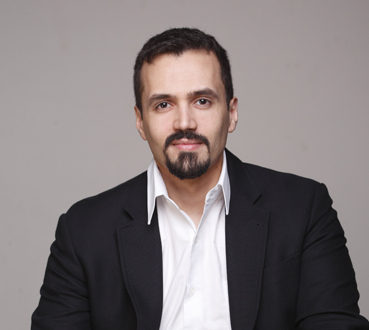It is not an attempt to anticipate the future, nor is it a talk about a science fiction film, but it is just a simple attempt to understand the reality in which we live and face its amazing variables at every moment.
There are defining moments and events in history, when the world may become completely different from what it was before this event. But in recent years, we have lived unprecedented experiences that generated repercussions where it has not yet been determined how humans will deal with in the future.
Unfortunately, we also may not have enough opportunity to understand and study them, as development has become successive and amazing. For example, the generations that witnessed the use of the first nuclear bomb against humanity are the same generations that absorbed the strike. They also coexisted with its consequences at a time when the movement of development was proceeding at a moderate pace that coincided with the ability of the human mind to deal with it.
But now, the situation has become really chaotic, and no one or state, no matter how capable they are, can claim to control the leaps of development. More dangerously, the techniques of this technological boom are no longer confined to a specific country or group but have become the property of any diligent and enterprising person.
Starting with the novel coronavirus (COVID-19) pandemic, which has obliged the world’s population to stay at home for the first time in history, and ending with the Havana Syndrome, the world is already witnessing a dangerous curve of technological development.
Although this world fought two world wars that cost more than 70 million deaths and more than 300 million displaced and injured, life continued in the other half of the globe, even in the countries that fought the war.
But today the whole world sits at the same time inside their homes without any distinction between the countries of the world, and this is the dangerous curve for sure.
This also raises an important question – how could the enormous development of countries such as the US, the UK, Germany, and Russia, not be able to save their people from the outbreak of the epidemic when they are supposed to be more immunised than the poor or developing countries?
During the last period, there was talk about the so-called “Havana Syndrome”, or directed energy, which is the next weapon of terror that could become the next nightmare after COVID-19. What is the story of this nightmare?
A few days ago, news agencies reported that the US federal authorities were investigating at least two incidents, including two “directed energy” attacks, on US soil, one of which was near the White House in Washington last November.
The excitement meant that the famous Politico magazine opened a wide discussion about the event, especially since it is not the first of its kind. Since 2016, about 50 Americans have been subjected to a mysterious wave of attacks, known as “Havana Syndrome”, and the first to be exposed to the attacks were members of the US Embassy in Cuba.
Later, a similar attack targeted dozens of American soldiers in Syria, which caused the US Department of Defence to open a direct investigation. The developments were discussed before US lawmakers in the armed forces committees of the Senate and House of Representatives.
The proven fact is that physicists, five decades ago, have been racing the winds on their way to invent energy systems that can be used in the field of military action, to be as powerful as their classic counterparts in global armies.
From here came the talk about weapons that use energy, and are based on directing them to achieve their goals, which contribute to igniting the fires of direct wars and also in indirect operations in which that energy is used to influence the enemies.
Depending on the definition used, directed energy weapons can be classified according to the type of energy used: sound, rays, light, particles, and plasma. The desired effects on the target range from physical destruction, orientation, confusion, disruption of machinery, and disability of persons.
Is the world on a date with a new lethal weapon, an invisible killer, capable of inflicting terrible losses on the human race, in particular, to become an alternative to the use of conventional military arsenals, and perhaps later make nuclear weapons useless?
Dr Hatem Sadek, Professor at Helwan University







